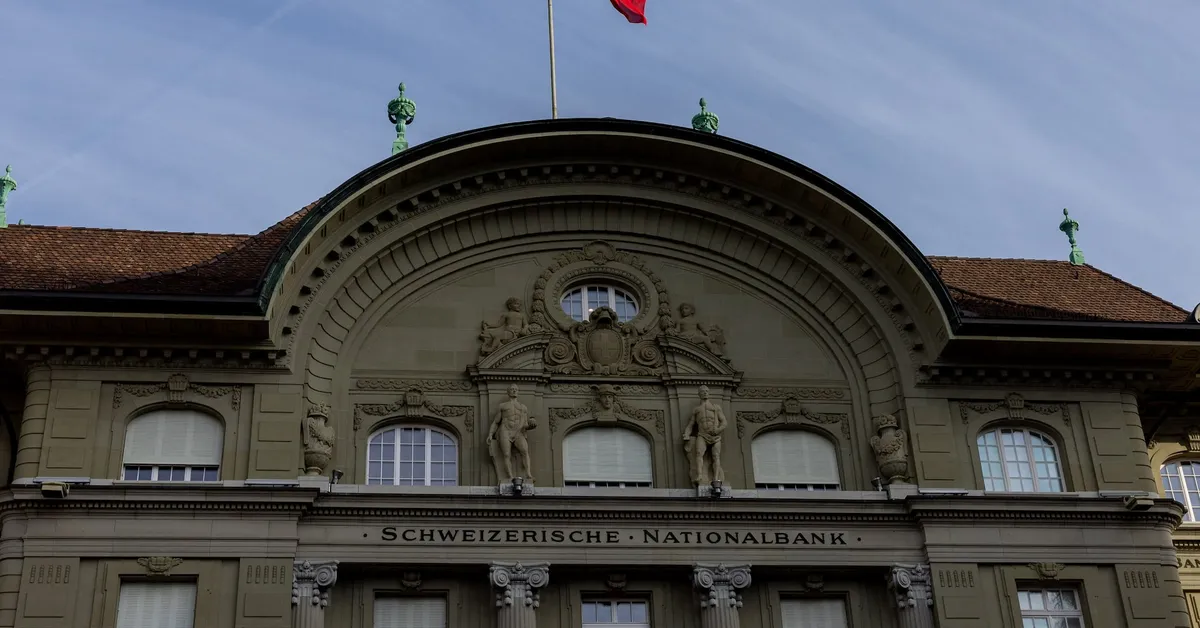
The Swiss National Bank (SNB) announced on June 19 that it has reduced its interest rate to zero, marking a significant shift in its monetary policy. This decision, which comes after a 25 basis point cut from 0.25%, brings the central bank to the brink of potentially reintroducing negative interest rates for the first time since 2022. While this move aligns with market expectations and a recent Reuters poll, SNB Chairman Martin Schlegel emphasized that returning to negative rates would not be taken lightly.
The SNB now holds the title for the lowest borrowing costs among its global counterparts. Market analysts currently estimate a 53% probability of further rate cuts in September. Schlegel highlighted the potential negative side effects associated with sub-zero borrowing costs, noting that a future rate cut would represent a more substantial decision given the current context. “As a central bank, you can never exclude measures, but the hurdle is higher now,” he stated during a press conference.
This strategic reduction in the policy rate aims to bring inflation back within the SNB's target range of 0-2%, which the bank defines as price stability. The central bank is currently observing low inflationary pressures, and the recent decision to cut rates reflects a proactive approach to maintain economic stability. The SNB has previously implemented negative interest rates from late 2014 to 2022, a period that was met with discontent from banks, savers, and insurance companies. Schlegel reiterated the challenges that negative rates pose, particularly for savers and pension funds.
Following the announcement, the Swiss franc initially strengthened but later stabilized against the dollar at 0.8191 francs. This sixth consecutive rate cut by the SNB coincides with a notable decline in Swiss prices, which fell by 0.1% last month—marking the lowest inflation rate in four years. The bank anticipates a weakening of global economic growth and rising inflation in the U.S. in the forthcoming quarters, while projecting decreased inflationary pressures in Europe.
The SNB's decision comes amid a busy day for central banks worldwide. Norway's central bank surprised markets with its first rate cut in five years, while the Bank of England opted to maintain its current interest rate. Earlier, the U.S. Federal Reserve held its rates steady but hinted at potential cuts later this year. The European Central Bank also trimmed its interest rate by 25 basis points, adding to the global trend of easing monetary policies.
As part of its revised strategy, the SNB has lowered its inflation forecasts for 2025, 2026, and 2027, leading some economists to predict additional rate cuts. Charlotte de Montpellier, an economist at ING Bank, suggested that the current decision paves the way for further cuts in September and a potential return to negative interest rates, unless significant changes occur in the economic landscape.
While some analysts, including those from Capital Economics, anticipate another rate cut due to persistent deflation, others, such as EFG senior economist GianLuigi Mandruzzato, believe the SNB may halt further cuts at zero unless faced with a considerable downturn in the Swiss economy, possibly triggered by increased U.S. tariffs. “All options remain on the table, including negative interest rates and foreign exchange market interventions,” Mandruzzato stated, emphasizing that these measures would require a significant deterioration of economic conditions.
The SNB's recent rate cut comes as the Swiss franc has gained around 11% against the dollar in 2025, effectively lowering inflation by making imports cheaper. The SNB has reiterated its commitment to intervene in foreign currency markets if necessary to keep inflation on track. However, with the U.S. recently monitoring Switzerland for unfair currency practices, the central bank is likely to proceed cautiously to avoid the perception of being a currency manipulator. Chief economist Karsten Junius from J Safra Sarasin noted the political implications of appearing overly eager to implement negative rates.
As the global economic landscape evolves, all eyes will be on the SNB as it navigates these complexities and responds to shifting economic indicators.